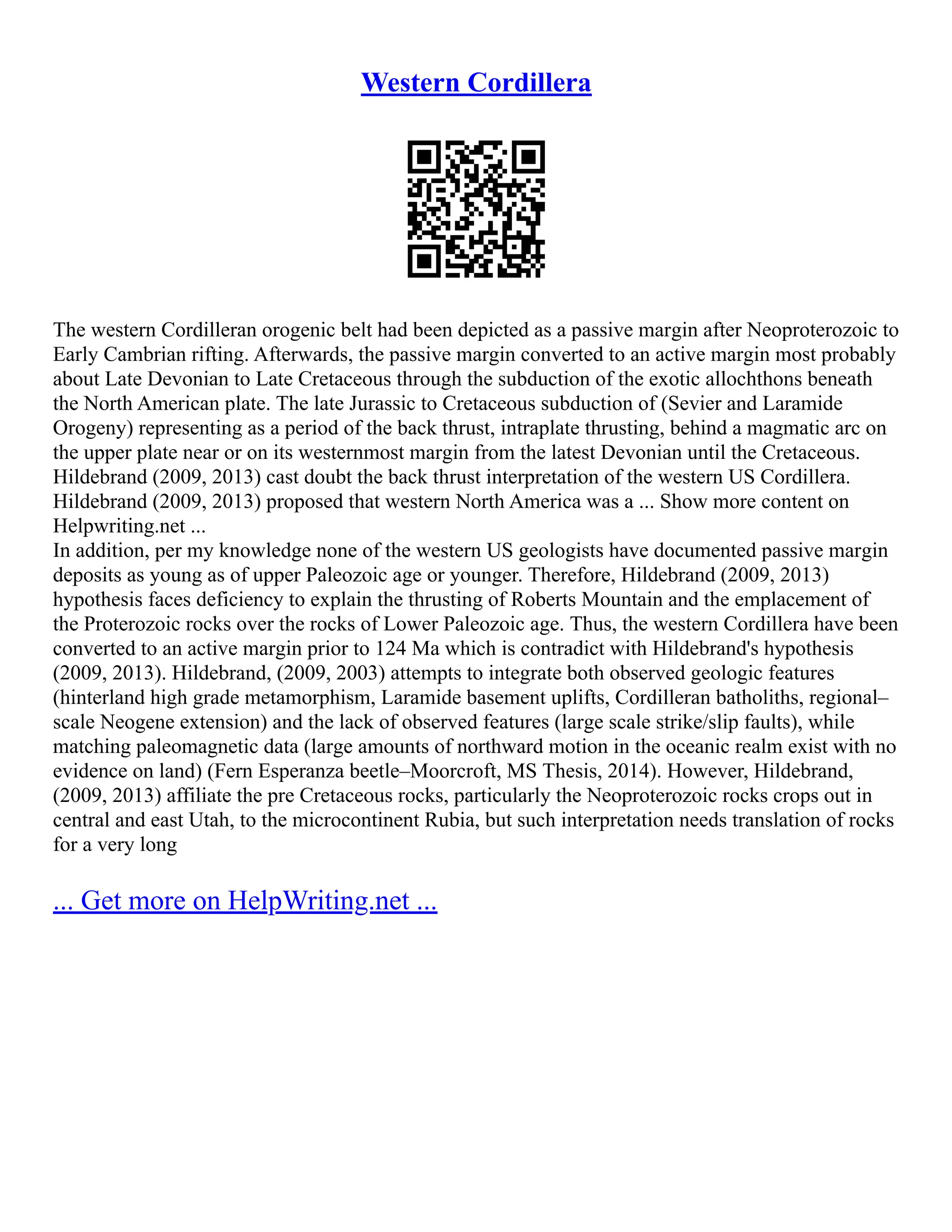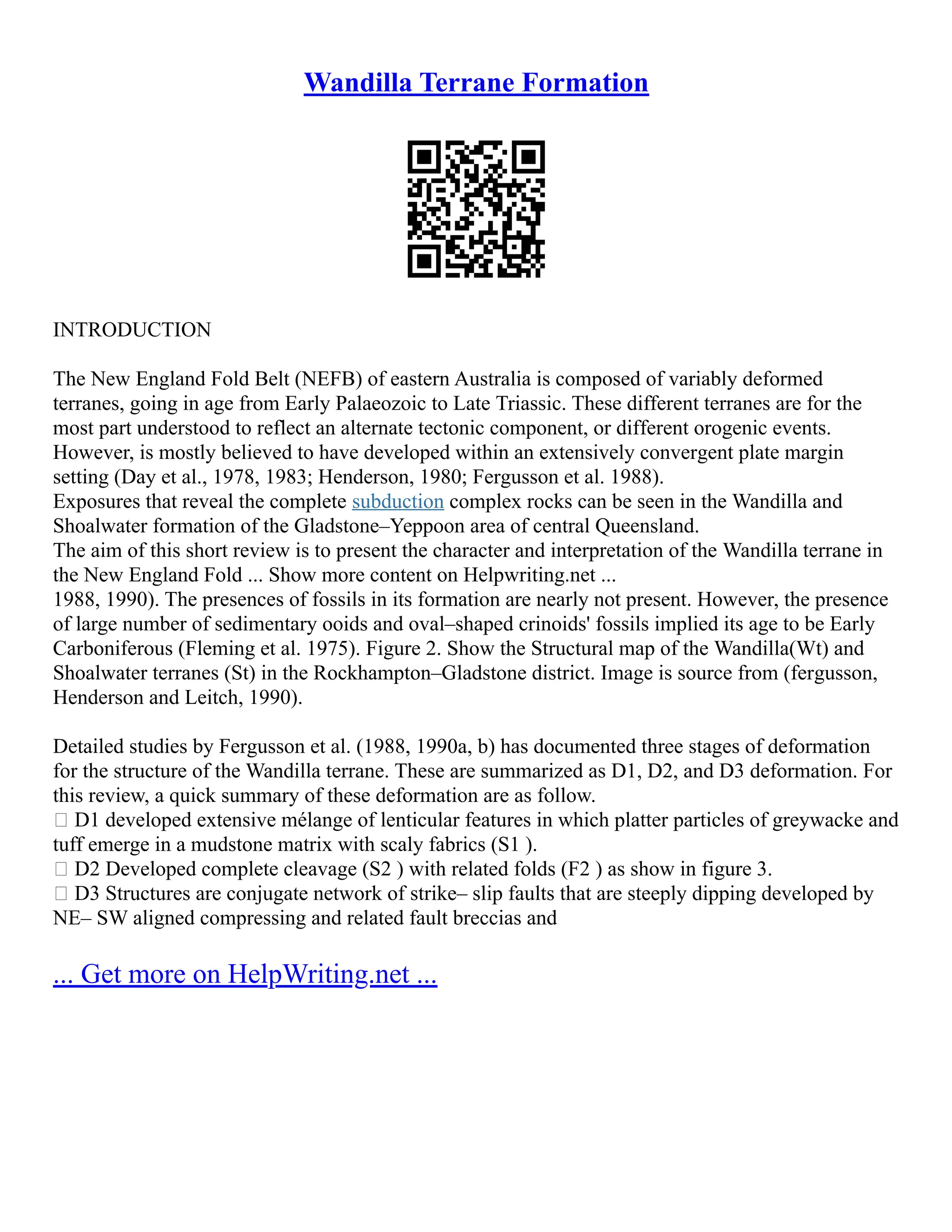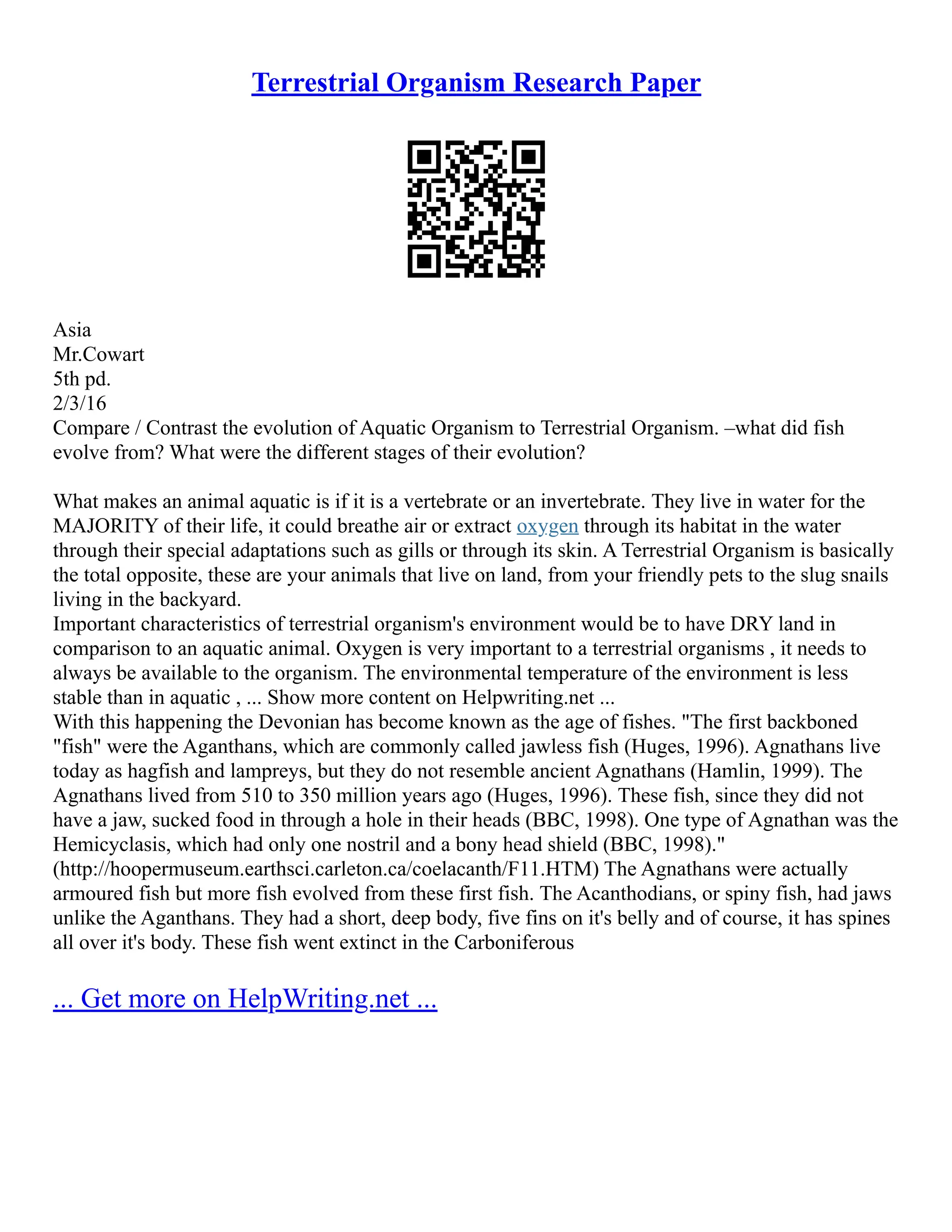The Late Devonian Frasnian-Famennian mass extinction around 375 million years ago saw the loss of many marine species. New dating of volcanic rocks in Siberia called the Viluy traps suggests they were emplaced in multiple phases, with an early phase potentially contributing to the extinction event. Changes in Earth's systems during the Late Devonian support the role of volcanism in disrupting marine habitats through elevated atmospheric gases and ocean anoxia. An initial pulse of volcanism from the Viluy Traps may have caused marine anoxia and ultimately led to extinction of species.








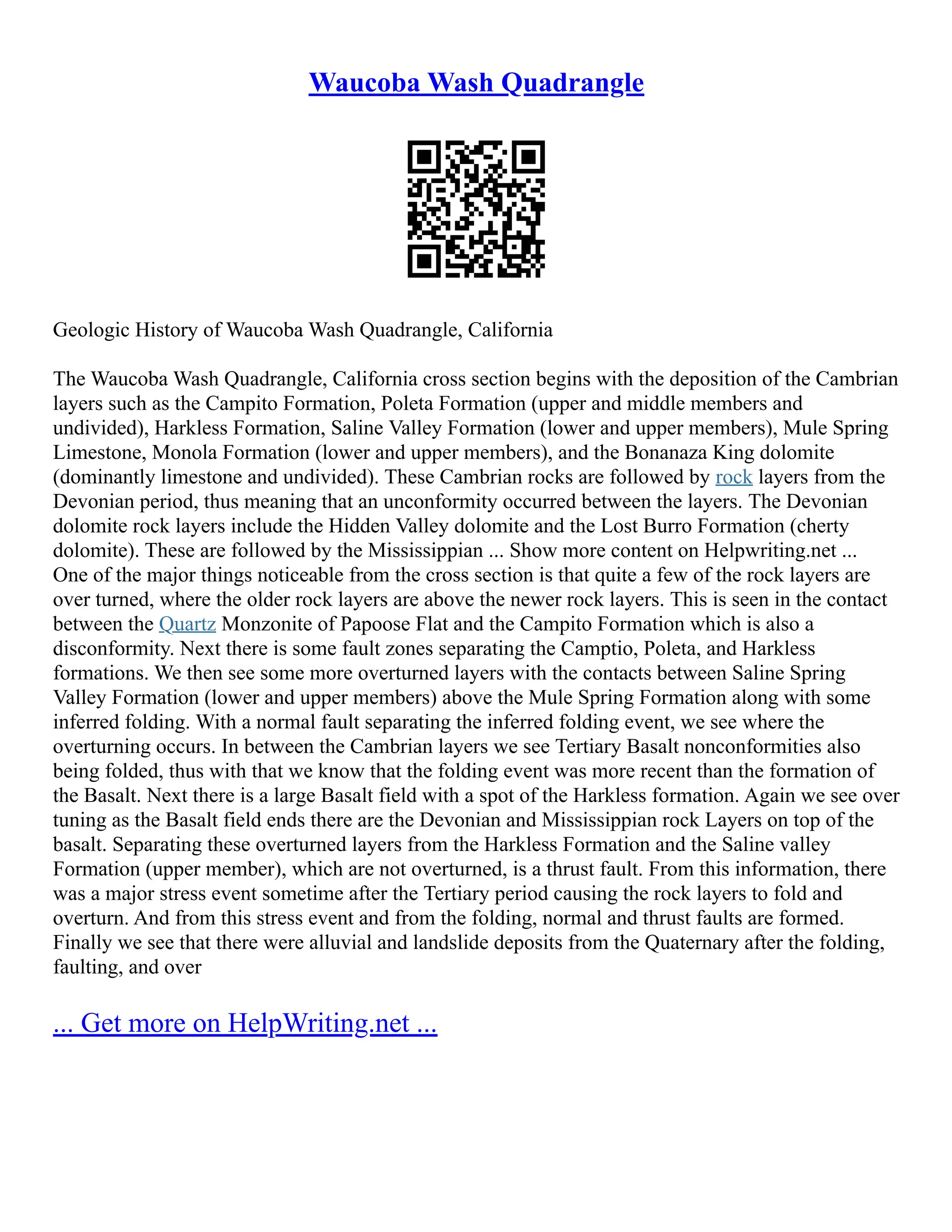















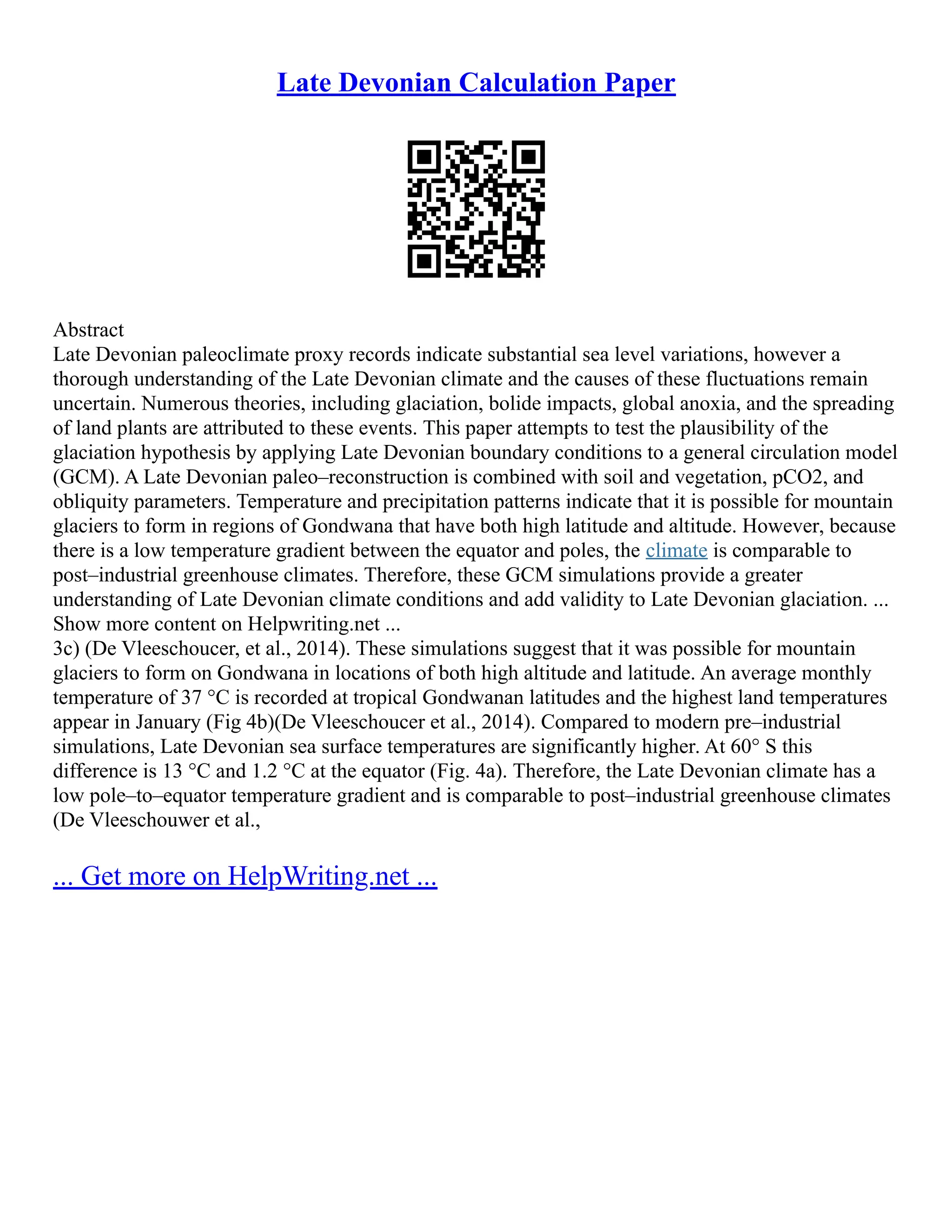



















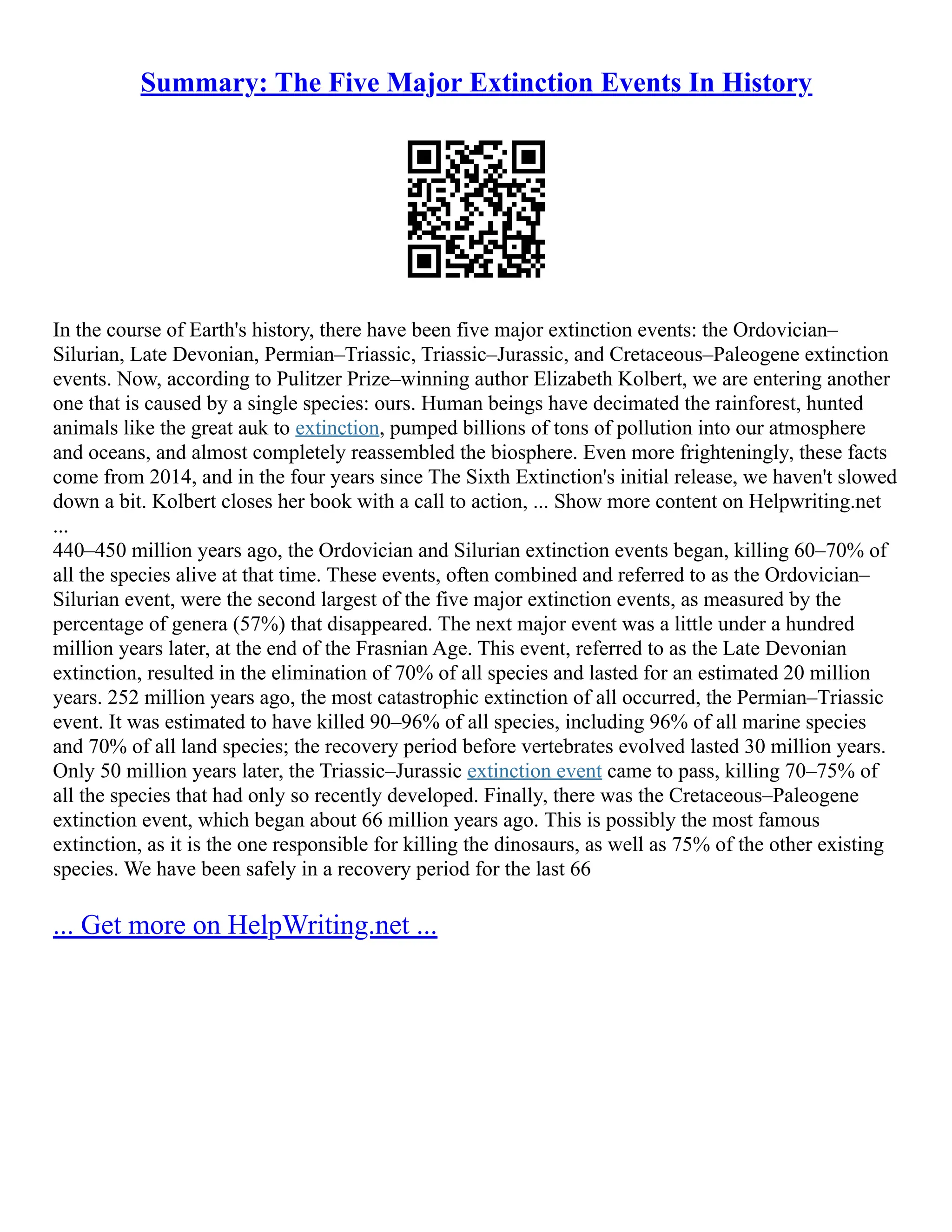















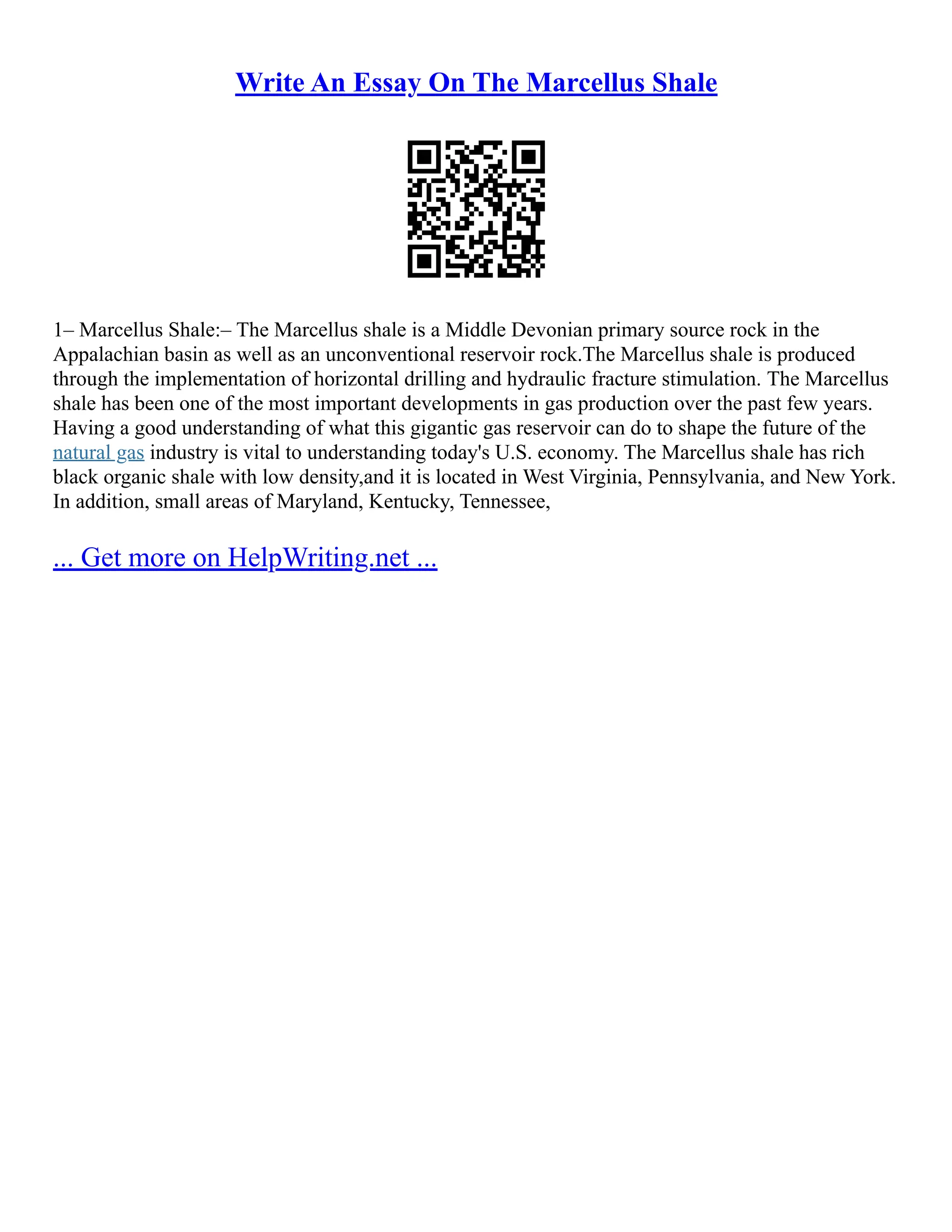























![History Of Mass Extinction Essay
The History of Earth's Mass Extinctions
The four billion year history of earth has witnessed five mass extinctions, and some scientists
believe that we are on the verge of the sixth.1[1] If we are in the midst of the next mass extinction,
we are in the very early stages of an evolving, and escalating process. The most recent, or fifth mass
of the extinctions occurred 65 million years ago at the boundary between the Cretaceous and
Tertiary periods. Images of an asteroid colliding with the planet, decimating the dinosaur population
have been in circulation since the early 80's.2[2] Being the most recent mass extinction, thousands
of scientists around the world have investigated it, and elementary school children are familiar with
... Show more content on Helpwriting.net ...
Experts have put together various theories about previous mass extinctions and their findings have
led some to believe that we are in the early stages of the sixth. One finding that has worried
scientists throughout the world is the rate at which species of plants and animals have been going
extinct. Previous research had discovered that the number of species of birds around the world has
been on a steady decline for some time.6[6] While this detection did raise some red flags, it was not
evidence that the next mass extinction had been launched.
While birds are abundant both in sheer population and number of species scientists needed to
discover the decline of more than one selection of animals. More than half of the detected species of
animals on earth are insects.7[7] If scientists wanted substantial, tangible evidence that there was a
widespread decrease in animal populations and worldwide decrease in biodiversity, researching
insects was the way to go. The results across the board were not the least encouraging.
The populations of butterflies in Britain were at the forefront of the researchers' findings. Overall,
71 percent of the butterfly populations have decreased in numbers and 3.4 percent of
... Get more on HelpWriting.net ...](https://image.slidesharecdn.com/whythecoalbedmethane-231114175625-4519e9d3/75/Why-The-Coalbed-Methane-85-2048.jpg)








